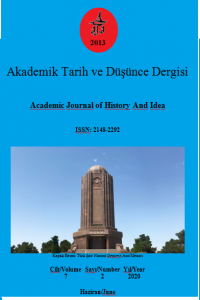دراسة نظرية وحدة الوجود في التصوف الإسلامي إلى إبن عربي
یکون وحدة الوجود اکثر شهرة في المصطلاحات الفنیة الصوفیة. هذا الإصطلاح یُتکون من کلمتین: الوحدة و الوجود. کلتاهما کانتا مهماً في التفکر الإسلامي من بدایته. دُخل البحث من الوجود متاخراً عن البحث من الوحدة في التفکر الإسلامی. ولقد لعب دورًا مهمًا، خاصةً في تطور الفلسفة، والتي يُعرف غالبًا باسم الأنطولوجيا. في نظریة وحدة الوجود، إن وجود الحقیقي في العالم هو الله، و الآخرون کلهم مظاهر و ظلال منه. لذا، یکون الکثرة في العالم لکن هولاء الکثرات في المظاهر فقط. لا تکون لهذه النظریة ارتباط مع الشرك. أی وفقاً لهذه النظریة، لایُسمی الإنسان الله. لأنه لا یکون الإنسان اصلاً و الوجود الحقیقي الله فقط. هذا الإنسان مظهر من مظاهر الحق فقط. یُسمی محی الدین ابن عربي مؤسس نظریة وحدة الوجود في اکثر کتب التحلیلي و العرفاني. بینما تکون أمثلة عديدة تُطرح هذه النظریة قبل إبن عربي في أقوال العرفا. یتداول هذا الإصطلاح في اقوال العرفا في قرن الرابع و و إبن عربي في القرن السابع الهجري جعله نظرية منهجية. في هذا البحث، فُتشت وحدة الوجود و جذورها و رموزها و مظاهرها في التصوف الإسلامي. ثم سیحلل الأمثلة و الإصطلاحات لوحدة الوجود حتی یُحصل جذوراتها و أیضاً تعین نظر کل العارف و الصوفي بهذا الإصطلاح.
Analyzing the theory of unity of being in Islamic mysticism until the time of Muḥammad ibn `Arabī
The most popular term in the Sufi technical terms is unity of being. The term is composed of two words, unity and being, both of which have been important in Islamic thought since the beginning. The discussion of being, almost later than that of unity, entered Islamic thought and played an important role, especially in the evolution of philosophy, which is often defined as ontology. In the theory of unity of existence, God is the only true being in the universe, and others are all manifestations and shades of the Truth. As a result, there is a plurality in the universe, but this is a plurality of effects. This theory has no communication to do with polytheism or dualism, which means that the theory is never called a human being, God. That is, according to the theory, a human being is never called God. Because this man does not exist at all and is only the true existence of God. This man is the only manifestation of God. In most analytic and mystical books, Ibn Arabi has been called the founder of the school of unity of being. However, there are numerous examples that have been put forward by Ibn Arabi in the midst of mysticism. This term was used before Ibn Arabi in the mystics of the fourth century AH, and Ibn Arabi in the seventh century AH has made it a systematic theory. In this study, the unity of being, its roots, allegories and its manifestations in Islamic mysticism is examined. Then the examples and terms of existential unity will be analyzed until the roots of unity of being to be found and each mystic's view of it must be specified.
___
- SANAEI, Hadiqat al Haqiqa Wa Šariʿat Al-Ṭariqa, Mohammad Tagi Modarres Razavi, University of Tehran, Tehran 1383.
ʻUMAR IBN AL-FARRID, divan, daar –ul- kotob –il- elmiat, Beyroot, 1410.
ZARRINKOOB, ABD –UL- HOSSEIN, Serr-e ney, Elmi, Tehran, 1390.
Arzesh-e miras-e soofieh, amir kabir, Tehran, 1387.
